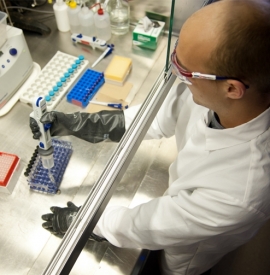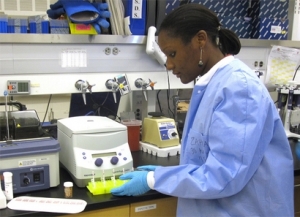- Store Personal Items. Keep all bags and personal items off the ground. Items on the ground such as backpacks, purses, jackets, etc. can potentially lead to tripping, slipping or falling. Personal items should be properly placed in a storage area or kept outside the lab.
- No Food or Drinks. Food and drink items should not be stored or consumed in a laboratory. With various toxins, chemicals and hazardous materials a laboratory can contain, it can be dangerous to have food and drinks nearby.
- Wear personal protective equipment (PPE). This includes eye and hand protection along with proper apparel and shoes.
- Proper Disposal. Dispose of chemical waste through your facility’s waste disposal program in a timely manner.
- Minimize Exposure. Reduce the levels of chemical exposure by implementing standard operating procedures. This may consist of specific laboratory supplies and equipment, including guidelines for workers to follow to ensure the highest safety measures.
- Label. Identify and make sure all chemicals are labeled and stored correctly. Labels will cause less confusion and help maintain an organized space.
- Minimize Loud Noise. High levels of noise can lead to anxiety, distractions and fatigue for laboratory workers, it’s important to maintain a quiet setting.
- Protect Electrical Equipment. Make sure all electrical equipment is in good standing and follow the manufacturer’s directions for maintenance and use.
- Notify Supervisor of Damaged Equipment. Notify your supervisor immediately when equipment or supplies appear to be damaged or not stored at the correct temperature.
- Emergency Training. All laboratory workers should be educated on what to do in case of an emergency within the lab. This information should also be covered in your facility’s lab safety guidelines.
For a full selection of laboratory products, be sure to check out our website to complete your laboratory supply. Remember, if you have any questions or concerns about your laboratory standards you should contact your supervisor or review your lab’s safety procedure manual. Any questions or comments regarding this post can be left in the comment box below!


Leave a Reply